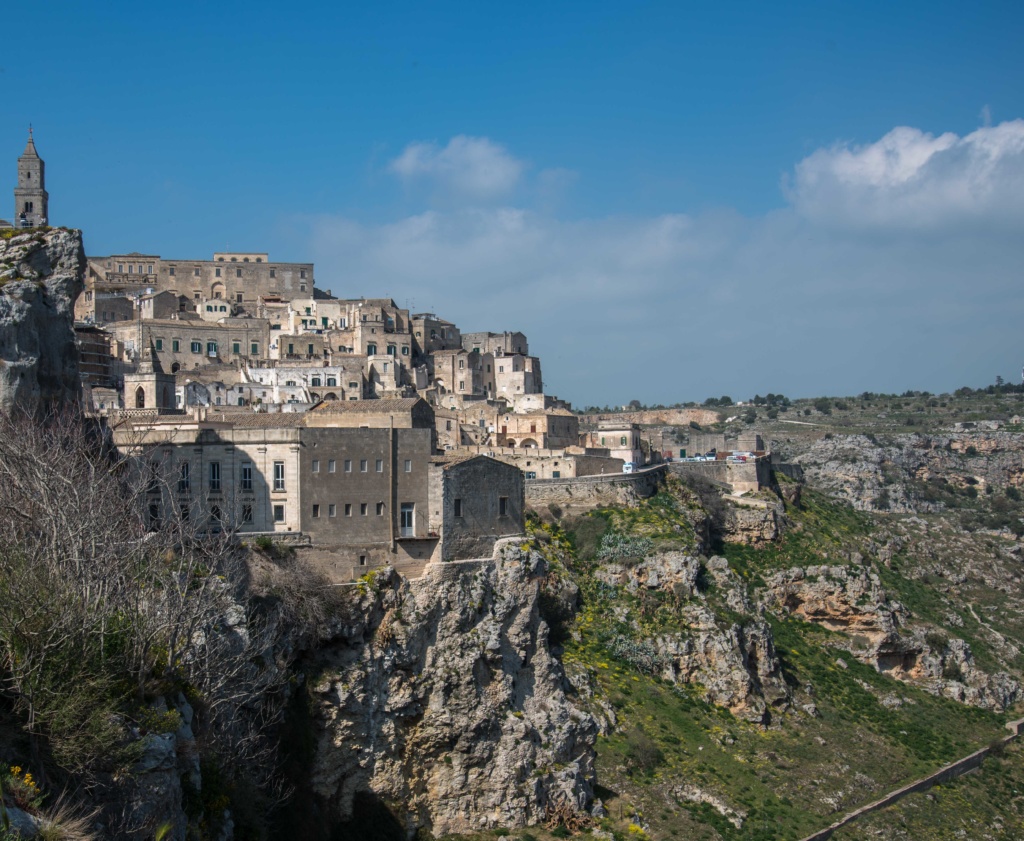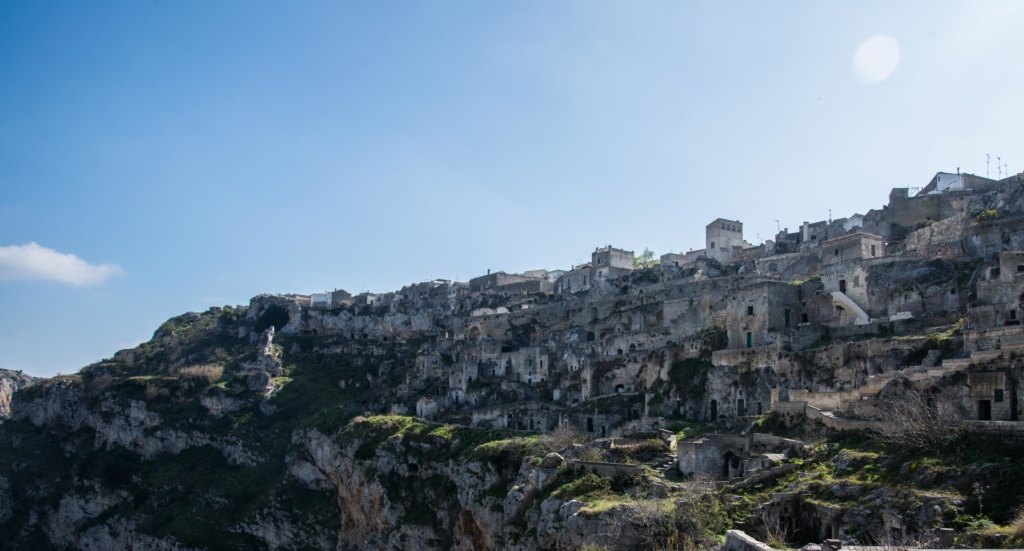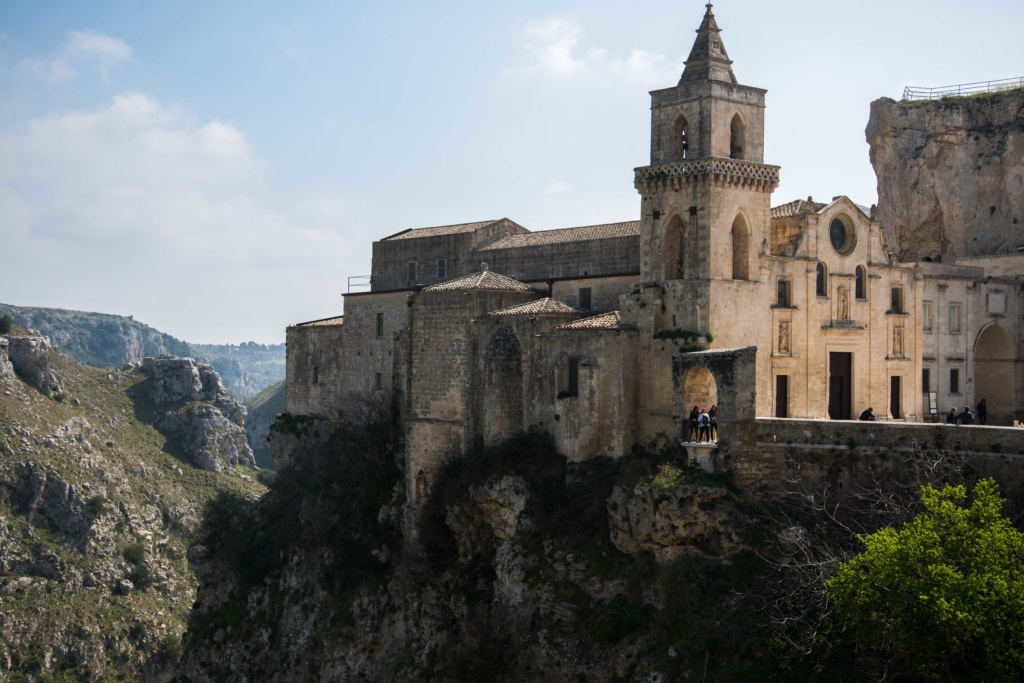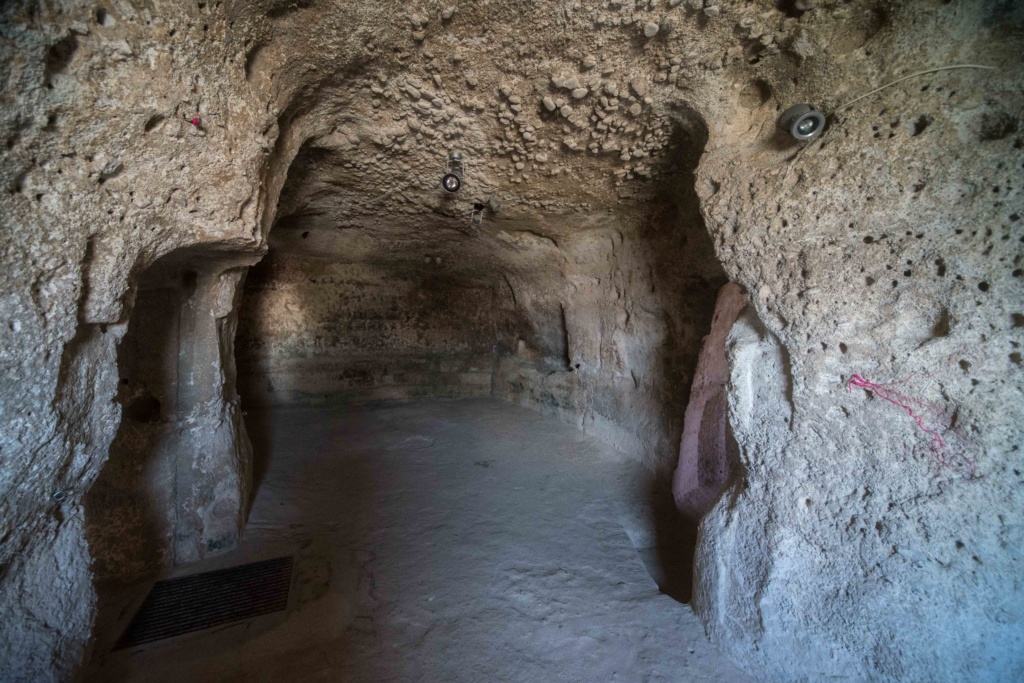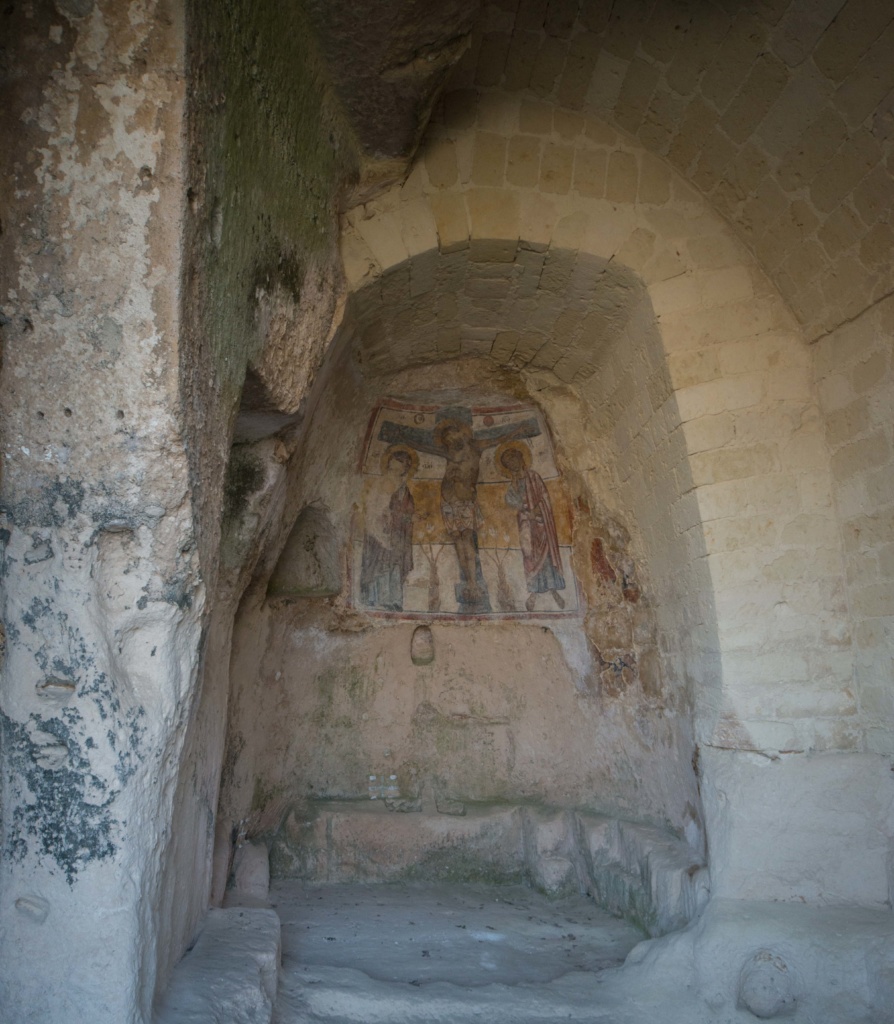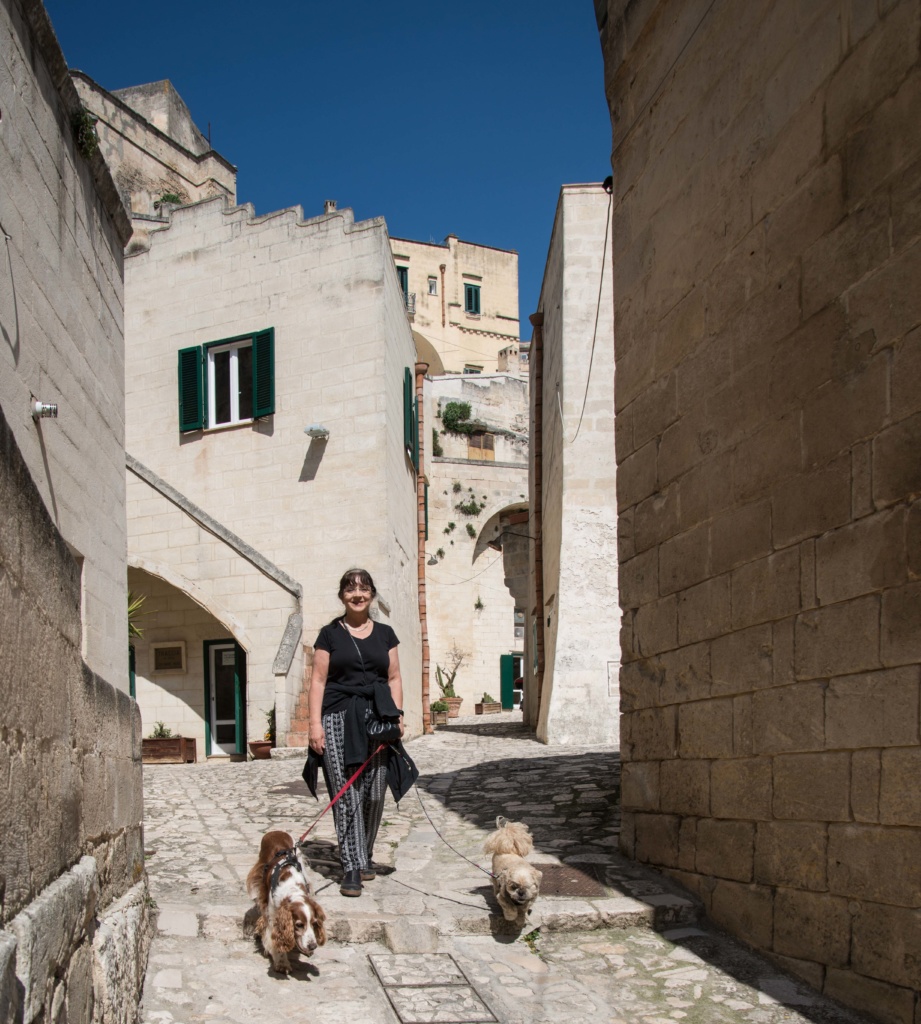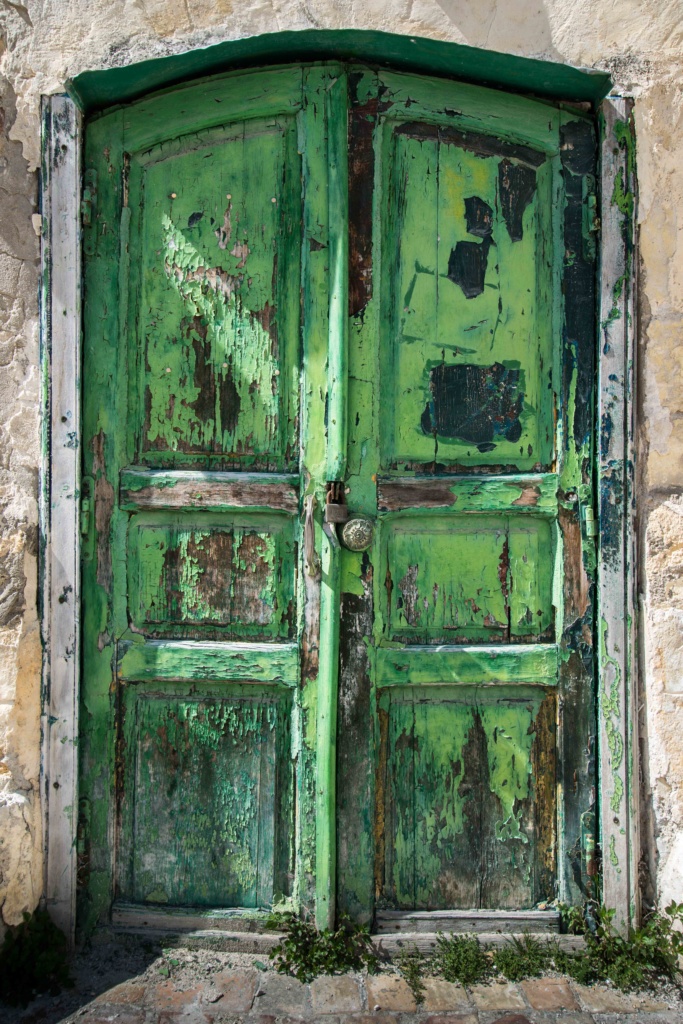Today was Matera day, but first we had to get there from our campsite. Driving Basil in the countryside in Italy is usually straightforward enough, save for the occasional lorry wandering over the centre line, leading to me cringing in anticipation of the explosive noise that means he’s taken off our wing mirror! That’s not happened yet. However, Basil has big bones, which mean manoeuvring him in the centre of Italy’s old towns is more of a challenge. The potential car parks I had identified meant that we did not have to venture into the old town, but Italian’s propensity to double park or to just park nose first against the curb leaving their back end in Basil’s path, made the journey more difficult than it need have been.
It also didn’t help that the first parking place I had selected was already full and the second was permanently closed. But, after further unwanted exploration of Matera’s new town, Sarah’s sharp eyes identified a free space on a side street big enough to plonk Basil’s large bottom.
Our exploration of Matera’s old town was very interesting and its streets characterful, but it was not always this way.
Matera is thought to be one of the oldest inhabited cities in Europe. In prehistory man started carving caves out of the soft limestone on both sides of a deep gorge. Eventually, by the middle ages, a whole city grew up on one side of the gorge, with the vast majority of its dwelling simply being caves hewn out of the rock with stone blocks closing up the entrance. Often these caves were on top of each other and they were all connected by a dizzying array of walkways and stairs.
By the 1950s Matera’s “Sassis” as these cave dwellings are known, had become a national scandal in Italy. Extreme poverty meant that whole families and their animals were living in single small caves, with no running water and no proper sanitation. Child mortality was 50% and malaria was rife!
The scandal led to a programme of clearances with families being relocated in modern housing and most of the sassis became derelict.
More recently the whole old town has, to a certain extent, begun to be renovated and UNESCO has made Matera’s sassis and it’s rock churches a World Heritage Site. In 2019 it will be European Capital of Culture. Matera’s rehabilitation is almost complete.
The old town is large and sprawling. We wandered down stairs and along alleyways. Many sassi are still empty but the whole place is extremely atmospheric. We went into the 8th century rock church, Madonna of Virtue, which demonstrated how churches were dug out from the rock and traditional features such as domes and coffered ceilings were rendered from the inside in rock. There were some 13th century paintings on the walls and linked to the church was a whole monastery cut into the side of the gorge and a collection of abandoned dwellings. To think that people were living in sassis such as these as late as the 1980s was very sobering.
Our overall impression of Matera old town was that it was definitely the most interesting place we have explored so far this trip and a must for anyone in the South of Italy. It is still unspoilt and the tourist shops are few and restrained. This may not last long.
We are back tonight on our lovely little campsite in the National Park on the heathland above Matera. This National Park is also part of the World Heritage Site because it is home to more rock dwellings and some rock churches from as early as the 5th Century. We are intending to explore this area on foot tomorrow.



